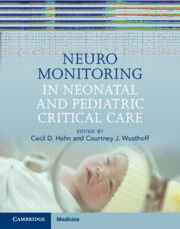The estimated global preterm birth rate in 20201 was more than 10% of livebirths or 13.4 million infants. Nutrition in the neonatal period is a key factor to optimise growth, neurodevelopment, and later metabolic disease risk2. There is no consensus on optimal nutrition for preterm infants, leading to substantial practice variation3. We aimed to assess the quality of nutritional guidelines for preterm infants, the consistency of recommendations, and the gaps in these recommendations. This review is reported using the Preferred Reporting Items for Systematic Reviews and Meta-Analysis (PRISMA) 2020 checklist. The study protocol was registered with PROSPERO (CRD42022327248). We searched six databases and 44 websites for nutritional guidelines for preterm infants before first hospital discharge, which were endorsed, prepared, or authorised by a regional, national, or international body, written in English, and published between 2012-2023. Two reviewers independently screened articles and extracted relevant data including nutritional recommendations (ranges or descriptions), the quality of recommendations (certainty of evidence and strength of recommendation), and gaps in recommendations, defined as those identified by the guidelines or when recommendations were based on very low certainty evidence. Disagreements were resolved by discussion or a third reviewer. Four reviewers appraised the included guidelines using AGREE II. We identified 7051 records, 27 guidelines were included in the review, 26% of which were of high quality. Most guidelines lacked stakeholder involvement and rigour of development. Twelve guidelines had recommendations for macronutrient intake, 18 for micronutrient intake, 12 for feeding, eight for fortification, and 14 for monitoring of nutritional adequacy. Only two guidelines provided recommendations for all five of these aspects. We found considerable variation in recommendations, many of which lacked details of certainty of evidence and strength of recommendation. Recommendations for feeding types and breastmilk fortification were consistent among high quality guidelines, but recommendations varied for intakes of almost all nutrients and monitoring of nutritional adequacy. Different guidelines gave different certainty of evidence for the same recommendations. Most gaps in recommendations were due to a very low certainty of evidence. Future development of nutritional guidelines for preterm infants should follow the standard guideline development method and ensure rigorous process including stakeholders’ involvement to improve the reporting of strength of recommendation, certainty of evidence, and gaps in recommendation. Evidence is needed to support recommendations about macro and micronutrient intakes, breastmilk fortification, and markers on adequacy of intake of different nutrients.
